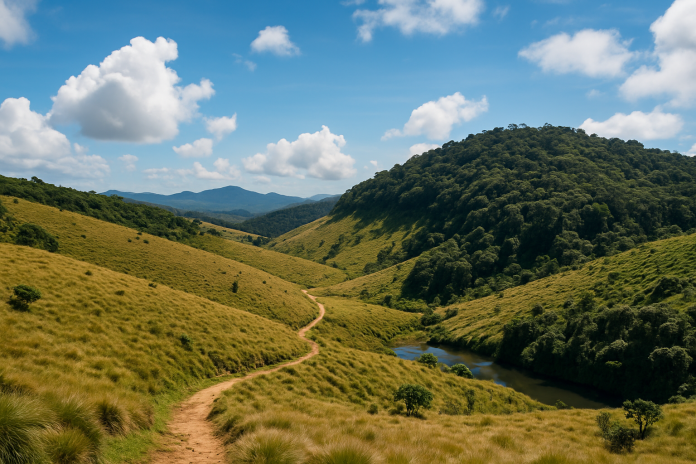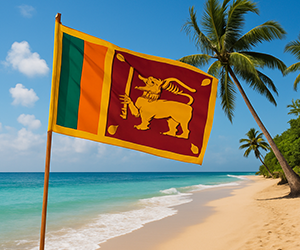Nestled in the heart of Sri Lanka’s Central Highlands, Horton Plains National Park is a UNESCO World Heritage Site renowned for its unique biodiversity, stunning landscapes, and rich ecological significance. Spanning over 3,160 hectares, this montane ecosystem offers visitors an unparalleled experience of nature’s splendor.
A Glimpse into Horton Plains
Situated at elevations ranging from 2,100 to 2,300 meters above sea level, Horton Plains is characterized by its rolling grasslands, cloud forests, and crystal-clear streams. The park serves as the headwaters for three major rivers: the Mahaweli, Kelani, and Walawe, underscoring its importance in Sri Lanka’s hydrology.
Flora: A Botanical Treasure Trove
The park’s diverse vegetation includes nearly 750 plant species across 20 families, with a significant number being endemic. The montane forests are dominated by species such as Calophyllum walkeri, Syzygium rotundifolium, and Cinnamomum spp., while the grasslands feature tussock grasses like Chrysopogon zeylanicus. Unique flora such as the rare daffodil orchid (Ipsea speciosa) and various endemic ferns and lichens add to the park’s botanical richness.
Fauna: Wildlife in Abundance
Horton Plains is home to a remarkable array of wildlife, including
- Mammals: Species such as the Sri Lankan sambar deer, purple-faced langur, and the elusive Horton Plains slender loris inhabit the park.
- Birds: The area is an Important Bird Area (IBA), hosting 87 bird species, including endemics like the Sri Lanka white-eye and the dull-blue flycatcher.
- Reptiles and Amphibians: The park supports various endemic reptiles and amphibians, contributing to its status as a biodiversity hotspot.
Must-See Attractions
World’s End
A sheer cliff with a drop of approximately 870 meters, World’s End offers breathtaking panoramic views. Visitors are advised to arrive early in the morning to avoid the frequent mist that can obscure the vista.
Baker’s Falls
Named after British explorer Sir Samuel Baker, this 20-meter waterfall is a picturesque spot surrounded by lush vegetation, making it a favorite among photographers and nature lovers.
Mini World’s End
A smaller yet equally captivating precipice, Mini World’s End provides stunning views and is often less crowded, offering a more tranquil experience.
Hiking and Trails
The park features a well-maintained 9-kilometer loop trail that guides visitors through its diverse landscapes, including grasslands, forests, and key attractions like World’s End and Baker’s Falls. The hike is moderately challenging and typically takes about 2.5 to 3 hours to complete.
Conservation Efforts
Horton Plains faces challenges such as forest dieback, invasive species, and the impacts of tourism. Conservation initiatives focus on habitat restoration, research, and sustainable tourism practices to preserve the park’s ecological integrity for future generations.
Visiting Tips
- Best Time to Visit: The dry season from January to March offers the clearest views and most comfortable hiking conditions.
- Getting There: The park is accessible from Nuwara Eliya, with a drive of approximately 1.5 hours.
- Entry Requirements: Visitors must purchase tickets at the entrance; it’s advisable to arrive early to avoid crowds and mist.
- What to Bring: Warm clothing, sturdy hiking shoes, water, and snacks are essential. Note that plastic bags are prohibited to protect the environment.
Conclusion
Horton Plains National Park stands as a testament to Sri Lanka’s rich natural heritage. Its unique blend of biodiversity, scenic beauty, and ecological importance makes it a must-visit destination for nature enthusiasts and eco-tourists alike.
For more insights and travel guides on Sri Lanka’s hidden gems, visit lanka.guide.




